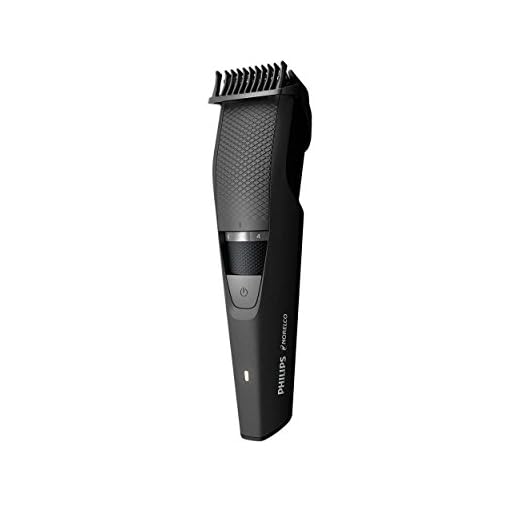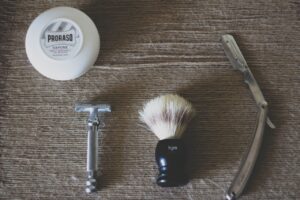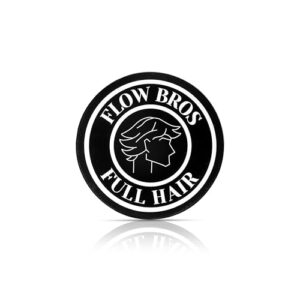Why the Right Trimmer Changes Your Beard Game
Choosing the right trimmer isn’t just about cutting hair — it’s about control, precision, and saving time. This guide helps you pick a trimmer that matches your beard type, style goals, and daily routine for confident, consistent grooming every day.
What You'll Need
Top Beard Trimmer for Men: Best Picks for Precision
Understand Your Beard and Styling Goals
Short stubble, sculpted lines, or full-on lumberjack—what are you really going for?Define the styles you want and how often you’ll maintain them. Picture the look: a tight 5 o’clock shadow, a sculpted goatee, or a full, trimmed beard—each requires different tools.
Assess your beard’s basics: density, growth pattern, and problem areas like patches, cowlicks, or uneven growth. Note where hair is thickest and where it grows slower.
Decide the upkeep frequency. If you’ll trim daily or every other day, prioritize quick, easy guards. If you’ll shape weekly, choose a tool built for longer sessions.
Consider the tool match to your goals:
Try a quick scenario: if you want a clean neckline and sharp cheek lines every week, plan for a trimmer with detail attachments and zero-gap capability. If you prefer low effort, aim for an all-in-one trimmer with durable guards.
Choose the Right Type of Trimmer
Foil, rotary, or cordless—are you choosing a tool or signing a lifestyle?Learn the basic categories and what they do. Recognize that foil and rotary shavers are built for ultra-close facial shaving, while beard trimmers come as full-size clippers, narrow detail trimmers, and T-blade edgers for shaping.
Choose the power style that fits your routine. Decide between corded (consistent power for long sessions) and cordless (mobility for travel). Check battery runtime and charge time—aim for at least 60–90 minutes runtime for cordless models.
Verify water resistance if you plan to trim in the shower. Look for an IP rating or explicit “wet/dry” labeling rather than assuming water tolerance.
Match the trimmer type to your goals:
Imagine trimming a week’s stubble: pick a cordless hybrid with quick charge and a narrow detail head for finishing touches.
Evaluate Blade Quality and Maintenance
Sharp blades are like sharp wits—dull ones ruin everything. Don't skimp.Inspect blade materials and coatings. Stainless steel is common and durable, while titanium and ceramic blades stay sharper longer and resist heat. Look for rust-resistant coatings if you live in a humid climate. Example: ceramic blades keep crisp edges for weeks of daily shaping.
Prefer self-sharpening systems and removable blades. Self-sharpening designs reduce downtime; removable heads make deep cleaning simple and let you access hard-to-reach hairs.
Look for these specifics before buying:
Check maintenance needs and accessories. Confirm whether the trimmer requires oiling, if it fully rinses under running water, and if the brand includes a cleaning brush or recommends one. Consider how easy replacement blades are to buy — a spare blade can keep your shaping precise and reduce pulling and irritation.
Look for Precision Features and Ergonomics
Want surgical control? Seek features that let you draw masterpieces.Prioritize features that improve control: fine-adjust length settings (1mm increments), adjustable combs, zero-gap capability for tight edging, and a narrow T‑blade for razor‑clean lines. Example: use a 1mm step to blend sideburns smoothly, then open the blade gap for a sharp cheek line.
Favor ergonomics that reduce fatigue: choose a lightweight body, textured grip, and a balanced weight so your hand stays steady during detailed work. Example: a slim trimmer lets you hold the tip like a pen when shaping an outline.
Check extras that make precision easier and travel more convenient.
Choose the right combo of precision features and comfort to shape consistent lines every time.
Test, Compare Reviews, and Buy Smart
Try before you commit — or at least read 100 reviews and ignore the haters.Compare models across the key value factors: motor strength, battery life, blade system, and included attachments. For example, choose a stronger motor for dense beards and a long runtime for travel.
Read expert and user reviews and watch for repeated complaints about reliability, excessive noise, or poor customer service. For instance, skip models with many reports of motors failing after a few months.
Handle a demo model in-store whenever possible: turn it on, hold it at your usual shaping angle, and test grip, noise level, and hand comfort. Notice if vibration makes fine work harder.
Check warranty length, return policy, and availability/cost of replacement parts like blades and combs. Prefer at least a 1–2 year warranty and easy access to spares.
Decide based on overall value, not just price: a slightly pricier trimmer with better blades and a solid warranty often saves time and money.
Keep a short checklist (style match, runtime, blade type, maintenance, warranty) to finalize your pick.
Make the Cut
Match your beard goals to the trimmer type, prioritize durable blades and precise features, test models and verify warranties so you buy confidently; the right tool makes shaping simple and repeatable — are you ready to make the cut today?












Lol, the “Why the Right Trimmer Changes Your Beard Game” made me laugh but it’s true — bought an expensive brand because of hype and it cut my cheek more than my ego.
A few things I test in-store before buying: weight (I hate a heavy handle), grip (rubberized wins), noise (some look fancy but roar like a lawnmower) and the actual guard clicks.
Battery myths: don’t trust quoted hours unless you test with a full charge and warm-up. Manufacturers always say 120 mins like it’s gospel.
Anyone else have a horror story of a trimmer dying mid-shaping? 😬
Also — ergonomics section is gold, keep more pics or diagrams next time.
@Zara that’s genius. Also, try turning it on at different speeds — some only perform well on high and die on low.
I always bring a power bank to the store and ask them to plug it in — sounds weird but you can catch a crappy battery that way.
Thanks Noah — haha, we’ve all had the mid-shape battery death. We’re planning to add a quick checklist for in-store testing (weight, noise, grip, guard action) in the next edit.
Yes! My trimmer died when I was doing wedding prep. Two words: backup clipper 😅
Great crowd-sourced tips — I’ll include the power-bank trick and speed-check in the in-store checklist. Thanks everyone!
Loved the maintenance tips — I had a cheap trimmer that dulled fast and it ruined my lines.
But the article could be more specific about lubricating frequency for heavy users vs occasional users.
Also, are ceramic blades actually better long-term? I find stainless steel more durable personally.
Thanks Olivia — good catch. Ceramic holds an edge longer but can chip if dropped; steel is tougher. I’ll add a short comparison table about durability vs edge retention for heavy vs light users.
Ceramic is great if you treat it gently. For someone clumsy (me), steel’s the safer bet. 😅
Quick thanks for the buying checklist — helped me choose between cordless and corded.
Question: for long sessions (trim + clean up every few days), is corded still the safer bet? I don’t trust the battery life on cheaper cordless models.
I use cordless with a spare charged battery — solves the worry without losing mobility.
Corded is more reliable for long sessions, yes. If you want cordless convenience, look for models with at least 60–90 min proven run time and fast-charge features. Also check whether the battery degrades (user reviews often mention that).
Super detailed guide — this helped me finally choose a trimmer that doesn’t pull hairs.
A couple of practical tips from experience:
1) For dense, curly beards: wider blade span and stronger motor. Don’t cheap out on motor power.
2) For precision shaping: look for T-blade + stubble length settings (0.5–3mm). The click-in guards make tiny increments easier.
3) Maintenance: use clipper oil after every 5–10 uses, and a small brush for fluff — lint kills motor efficiency over time.
Bonus: if you plan to travel, check if the trimmer has universal voltage and a travel lock. Saved me a headache abroad.
Would love a short section comparing motor types (magnetic vs rotary) more explicitly!
If you oil more often than recommended, it helps even more. I oil weekly during winter when hair gets drier.
Agree on travel lock — almost lost a trimmer to suitcase activation once, ugh.
Fantastic suggestions, Zara. I like the travel lock note — I’ll add that and expand the motor-type comparison (magnetic vs rotary) with use-case recommendations.
Magnetic motors are usually quieter and faster, rotary packs more torque for thick beards. Good rule of thumb.
This is solid — especially the breakdown of trimmer types (foil vs rotary vs multi-tool).
Quick question: for shaping a sharp cheek line, would a foil shaver ever be better than a detail trimmer? I’m torn between buying a separate detailer or getting a trimmer with a T-blade.
Also wanted to say the “Test, Compare Reviews” section is underrated. Hands-on in-store tests helped me avoid a battery dud last year.
Good question. For a sharp cheek line, a T-blade or a dedicated detailer usually wins — foil shavers are great for close shaves but not as good for precise shaping. If you like one-tool convenience, look for a trimmer with a high-quality T-blade and an adjustable guide.
I used a foil once for lines and it smudged my shape — switched to a T-blade and never looked back.
Agree with admin. T-blade for lines. Also look for a trimmer with good blade gap (they mention it in the blade quality section) so you can hover without digging in.
Great guide — this actually cleared up a lot for me.
I always thought more attachments = better, but the section on “Understand Your Beard and Styling Goals” made me rethink that. My beard is patchy so precision edges matter more than a million guards.
Also loved the tip about blade maintenance — who knew oiling every few weeks made that much difference? 🤦♀️
One thing I’d add: mention cleaning systems (vacuum vs rinse) — some of us are lazy and want the easiest cleanup.
Thanks for the practical advice, will try the ceramic blades you recommended!
I feel you on the cleaning — my first trimmer was a nightmare to keep clean. Try models with detachable blades, makes rinsing way easier.
Thanks Maya — glad it helped! Good point about cleaning systems; I’ll add a short note about vacuum vs rinse-friendly models in the next update.